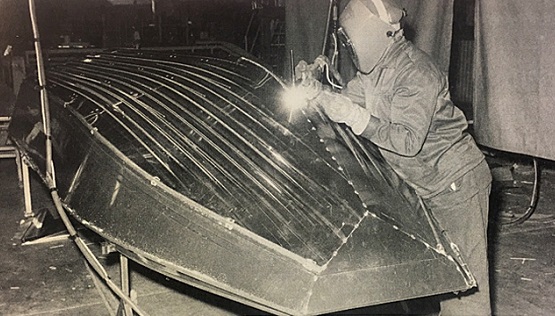- Home REN
- Home
-
Shop
-
Industries
- Processes
- Gases and Equipment
-
Services
-
Safety
-
Contact & Support
-
News & Media
- Agent Finder
Your Buster boat is assembled by welding
The boat's behaviour and driving characteristics are significantly influenced by the hull of the boat and its shape. However, few people wonder what has been done to build the boat or what the risks and challenges involved. In this case, we're going to talk about assembling an aluminum boat and the challenges of welding.
Challenging material
Aluminium welding requires professionalism from its manufacturer. Welding errors may arise due to, among other things, the fissure bending of aluminium and the porosity of the welding points. Aluminium alloys may react hotly with welding additives and cause hot cracks in the material. A skilled welder is familiar with additives and weldable mixtures and thus manages to reduce the risk of heat cracks.
Porosity in welding is caused by hydrogen. It is very soluble in molten aluminium, but poorly in the additive, which in TIG welding is added cold to the welding site. Pores can be avoided by preventing impurities from entering the shielding gas system and by using a clean additive wire.
Ensuring occupational safety is important in the manufacture of the boat. Aluminium arc welding generates ultraviolet and infrared radiation, fumes and ozone. They must be protected against them with suitably dark safety glasses, good ventilation and protective gases, among other things.
Aluminium boats continue to gain popularity
Aluminium boats are popular for their safety and reliability. The hull of the boat does not require much maintenance. It doesn't hydrogen, it doesn't rust, it doesn't rot. For many, the Finnishness of the product is also an asset when buying a boat.
Aluminium boats are still manufactured in Finland by hand by welding. However, the automation of welding is being actively studied in order to keep the Finnish boat industry competitive. Attempts are being made to transfer the practices and know-how familiar from steel welding to aluminium welding.
In a typical leisure boat, the combined length of the welds is about 90 meters. About 70% of these could be welded with robots, but more detailed welds will continue to need a human bender. It has been calculated that the boat's robotic welding is up to 2.5 times more efficient than hand welding.
